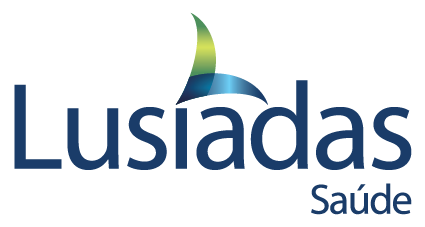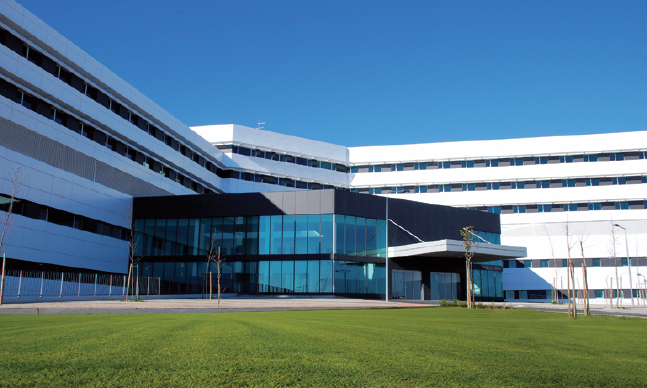This is a tale of making care better. Better for patients, better for the caregivers providing it, and better for a healthcare system morphing and migrating to thrive as a high-performing public-private hospital partnership in Portugal. The key ingredients? Achieving Stage 7 on HIMSS’ Electronic Medical Record Adoption Model (EMRAM) with a high-performing EMR that’s image-enabled by a Sectra PACS and UniView universal viewer, top-down buy-in for technology excellence and standards-based integration among devices and IT systems. That’s according to the clinical and IT team at Hospital de Cascais (managed by Lusíadas Saúde Group) in Cascais, Portugal. And the formula is clearly working. A recent evaluation, including by the government, ranked them at the top of clinical excellence and also high value for money for the government, coming in 24 percent cheaper than public costs.
It was all part of a process of rethinking how we were spending our money. Basically EMRAM is directly connected with patient safety and all the efficiency around delivering care. So for us adopting EMRAM was just a simple thought process.
Lusíadas Group is a network of hospitals and clinics stretching across Portugal from north to south. More than treating illness, the health group is focused on their mission of helping people live healthier lives and making the health system work better for everyone. To that end, they seek to have the best healthcare professionals offering high-quality services, the most advanced technologies, a high degree of concern and value for patients and offer locations to care for patients close to where they live and work.
Hospital de Cascais stands out as it operates under an innovative model of healthcare administration in a public-private partnership. Licensed for 277 beds, each year it completes around 10,000 surgeries and more than 140,000 outpatient consultations. They serve a catchment area of 320,000 people.
Many believe collaborations between the private and public sector are a win-win because moving forward neither sector will be able to supply alone the full scope of healthcare. Partnerships allow the state to offer services to citizens it is not able to supply alone, while the private sector has the opportunity to develop itself. It also allows the hospital to compete in a highly competitive environment more effectively based on excellence, clinical staff, price, technology and innovation.
Hospital de Cascais stands out as a public and private provider that is both high tech and high touch. “We are a public-private partnership in that we are the private partner manages a public hospital,” explains CEO Vasco Antunes Pereira. “It is a 10-year contract to manage the whole clinical operation, being paid based on DRGs and outpatient visits. So we seek to be both progressive in the way that we manage patients and information. That is why we must always bring in the best technology.”
A recent evaluation by SINAS—a system for the evaluation of the overall quality of health services in Portugal (public and private) developed by the National Health Regulatory Entity (ERS). Portuguese government shows the strategy is working well in terms of clinical excellence. Also an evaluation study—Value for Money of the Public Private Partnership of Hospital de Cascais, conducted by the Center for Applied Studies of the Portuguese Catholic University, in October 2016—shows the high value for money for the government, coming in 24 percent cheaper than public costs. In 2017, Hospital de Cascais was named the best hospital in terms of clinical excellence by SINAS, which is part of the health regulation authority in Portugal called ERS. And in terms of value, the facility was found to be 24 percent cheaper when compared to public comparable costs.
“We needed technology to achieve that efficiency and that is where Stage 7 comes in—and we needed images to be a part via information exchange,” Pereira says.
If you adopt the maturity model, you follow a path that is already proven around the world. Basically you are learning from those that are more involved than we are. This is the way forward for hospital and health systems seeking to deliver better care to patients and greater efficiency. It makes sense for patients and it makes sense for business.
EMRAM distinguishes
It was the desire to push care to the next level while realizing greater efficiencies that drove the hospital group to adopt EMRAM in 2015, says Pereira. “Cascais is the largest healthcare unit within our Group, so we started [with EMRAM] in Cascais,” he says. “It was all part of a process of rethinking how we were spending our money. Basically EMRAM is directly connected with patient safety and all the efficiency around delivering care. So for us adopting EMRAM was just a simple thought process.”
The internal team took the reins, re-engineering some processes and adopting some new technology. In November 2017, they reached the Stage 7 and became the third hospital in Europe to be Stage 7.
HIMSS Analytics developed the eight-stage EMRAM as a way for hospitals to track IT maturity in comparison to other healthcare organizations nationwide. It offers a progressive model to measure the adoption and utilization of EMR functions that help to enable quality, safety, and operational efficiency for healthcare providers around the globe.
With a Stage 7 project, you need suppliers to understand where you are going. And often it is simpler to have fewer than more vendors. Having one supplier that’s strong, that knows exactly how Stage 7, was important to us. That increases the speed you can implement change. And that was our experience with Sectra.
Images bump up to Stage 1
It was a 2018 update that brought PACS into the EMRAM fold far earlier in the process. New criteria brings a new focus on privacy and security and moves the PACS and digital imaging requirement from Stage 5 down to Stage 1. That means that hospitals vying for Stage 1 need to have PACS for DICOM and patient-centric storage of non-DICOM images.
Hospital de Cascais has been a Sectra PACS user for a decade. Sectra was instrumental in closely integrating the PACS with the EMR to enable image access for patients who had imaging done at other facilities and brought a CD, film or stick containing the studies. To become Stage 7, the facility needed to exchange information with all of its partners which meant an upgrade in the form of a universal viewer to offer viewing for third parties.
The health system needed to choose one universal viewer for all facilities. Since Cascais uses several PACS across the system, they looked at a variety of vendor’s viewers but decided on Sectra UniView, says IS/IT Director Luis Vaz Henriques.
“We were already using Sectra PACS in some of our private hospitals,” Pereira adds. “They have been expanding their operations from the public health to our private hospital given the quality they deliver. UniView is a differentiator too in terms of capabilities.”
Sectra UniView is a zero-footprint web viewer that enables secure and instant access to medical images, documents, requests and reports. It allows physicians to view and interact with medical images at high speed, including images, non-DICOM images or videos as well as search and quickly and securely access images and related patient information from any device or embedded in the EMR.
Day to day, “we check all the images we have for a patient, whether they were performed here or at another facility,” Pereira says. “We upload images that come from outside into our PACS and that allows, within NHS, every doctor with permission to access and check the medical history and images.”
With a single viewer across the health system, physicians can access multiple PACS in other hospitals via the cloud after a simple search by patient name.
The benefits have been many, including avoiding unnecessary imaging, avoiding repeat exams, reducing and avoiding radiation and cutting out extra costs, including costs previously spent on licenses. “For sure it means improving quality, reducing costs, all those good things,” he says. “And reducing the harm to a patient with unneeded scans.”
Another benefit, he notes, was having one vendor partner for both PACS and the universal viewer across the health system to store images and allow viewing from any device. “The path of bringing on a viewer with one vendor is smooth. It went very well. Simplifying is always a benefit,” Pereira says.
The UniView is the enabler of having images wherever a system needs them, from any computer with proper access. “In the past you had problems with the capacity of the network because you were accessing the real image within the PACS,” he says. “With the UniView, you have access to the view of the PACS so it’s a lot faster. Access with any device is always a benefit for physicians having access wherever they are.”
Expanding access to more people and more devices was essential for Hospital de Cascais achieving Stage 7 EMRAM. “With a Stage 7 project, you need suppliers to understand where you are going,” Pereira says. “And often it is simpler to have fewer than more vendors. Having one supplier that’s strong, that knows exactly how Stage 7, was important to us. That increases the speed you can implement change. And that was our experience with Sectra.”
With the PACS and the universal viewer up to speed, Hospital de Cascais has its sights set on moving to a VNA, again with Sectra. They are now testing a VNA as a repository for imaging exams, with images coming online in the near future.
“The goal is to have all exams within the VNA,” Pereira says. The VNA will include radiology and cardiology. “This too is a project focused on competing well in a highly competitive environment and being very efficient. Leading edge technology is at the core of clinical and operational excellence.”
And it is EMRAM Stage 7 that offers the path. “If you adopt the maturity model, you follow a path that is already proven around the world,” he says. “Basically you are learning from those that are more involved than we are. This is the way forward for hospital and health systems seeking to deliver better care to patients and greater efficiency. It makes sense for patients and it makes sense for business.”

About Lusíadas Group
The network of hospitals and clinics provides a range of services based on a network that covers the entire national territory of Portugal, with more than 6,000 health professionals via 7 Hospitals and 6 Outpatients Centers (Hospital Lusíadas Porto, Hospital Lusíadas Lisboa, Hospital de Cascais – PPP, Clínica de Sto. António, Hospital Lusíadas Albufeira, Hospital Lusíadas Faro, Clínica de Santa Tecla, Clínica Lusíadas Gaia, Clínica Lusíadas Almada, Clínica Lusíadas Parque das Nações, Clínica Lusíadas Sacavém, Clínica Lusíadas Faro, Clínica Lusíadas Forum Algarve). Founded in 1998, the Lusíadas has distinguished itself with an innovative vision, strong spirit of continuous improvement, excellence and rigor, as well as by sustained growth and expansion of the outreach network across the country. In 2009, it began managing the Hospital de Cascais (PPP), while in 2013, the company was acquired by UnitedHealth Group (United States).
Featured products & services
Related cases




